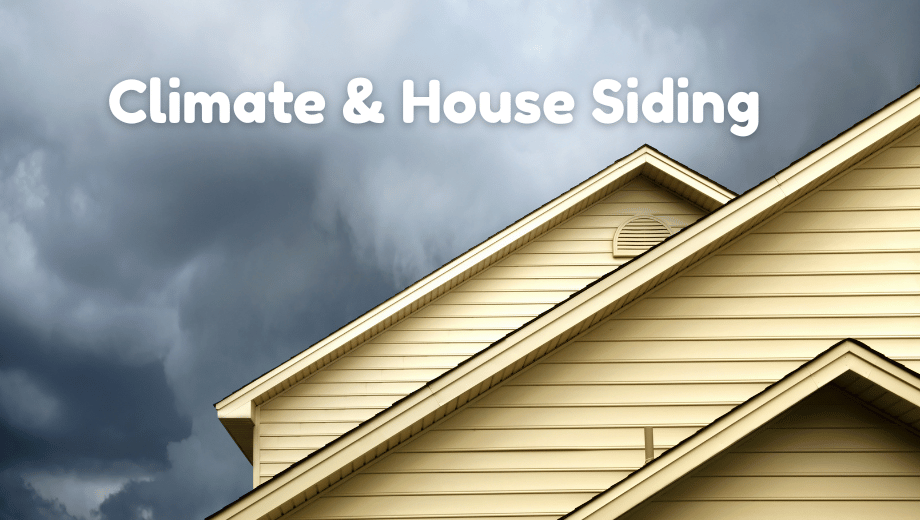Selecting the right siding for a home involves more than just visual appeal. Homeowners need to think about the conditions their property will face throughout the year. The climate of a region influences how siding materials perform over time, affecting durability, maintenance requirements, and overall longevity. From sweltering summers to frigid winters, the choice of siding can make a significant difference in both comfort and structural integrity. Understanding how climate shapes this decision helps homeowners make an investment that balances aesthetics with practicality.
Vertical Siding and Its Relationship to Climate
Vertical siding offers a striking appearance that distinguishes it from more traditional horizontal layouts. Its design allows for efficient water drainage, which is particularly useful in areas with frequent rainfall or snow. Homeowners interested in exploring more about this style can click here for further insights into its advantages. In humid climates, vertical siding can help reduce the risk of trapped water that often leads to warping or mildew. In dry regions, its clean lines provide a contemporary look without sacrificing durability. For those living in mixed climates, vertical siding can be an adaptable choice that combines functional performance with appealing design.
The Role of Heat and Sun Exposure
Intense sunlight and high temperatures have a direct impact on siding. Prolonged exposure can cause fading, cracking, or warping, depending on the material. Vinyl siding, for instance, may lose color more quickly in southern regions where the sun is relentless. Fiber cement and engineered wood handle sun exposure more effectively, retaining their structural integrity and appearance for longer periods. Choosing the right siding for a hot climate means balancing reflective qualities with materials that resist heat-related damage. A lighter shade can also help reduce energy costs by reflecting rather than absorbing solar energy.
Cold Weather and Freeze-Thaw Cycles
Regions that experience long, icy winters create unique challenges for siding. When temperatures fluctuate around the freezing point, water can seep into small cracks, expand as it freezes, and widen the damage. Wood siding is particularly vulnerable to this cycle, as it can split or rot if not properly treated. Fiber cement, steel, and high-quality vinyl are better suited for these environments because they resist cracking and moisture infiltration. For homeowners in cold climates, siding that offers insulation benefits is especially attractive, since it contributes to energy efficiency while protecting the home’s structure.
Humidity and Precipitation Concerns
Areas with heavy rainfall or year-round humidity demand siding materials that can withstand constant exposure to water. Traditional wood siding often struggles in such environments unless meticulously maintained. Engineered wood, on the other hand, is treated to withstand moisture more effectively, making it a stronger choice. Fiber cement also excels in these conditions, resisting swelling, rot, and insect activity. In climates where storms are common, siding that can endure driving rain without buckling is critical. Proper installation and sealing play as large a role as the material itself, ensuring that water drains away rather than penetrating the home.

High Winds and Storm Resistance
Homes in coastal or tornado-prone regions face the added challenge of strong winds. Siding needs to remain securely attached even under extreme gusts. Vinyl siding can sometimes detach in these conditions if not installed with reinforced fasteners. Steel siding offers exceptional strength, making it a reliable choice for areas prone to hurricanes or severe storms. Fiber cement, too, stands up well to impact and wind pressure. For homes near the ocean, salt in the air can corrode some materials, which makes corrosion-resistant finishes an important consideration. Storm resistance should never be overlooked, since siding is one of the first lines of defense during severe weather.
Balancing Aesthetics with Climate Demands
Every homeowner wants siding that looks appealing, yet climate plays a decisive role in narrowing down the best options. Materials that perform beautifully in dry, temperate regions may struggle in areas where snow, rain, or humidity dominate. While personal preference for texture, color, or style matters, climate-informed choices ensure that beauty does not come at the expense of durability. Vertical siding, fiber cement, steel, and engineered wood all present unique visual qualities, and each material can be adapted to fit regional requirements. By choosing siding that aligns with the demands of the environment, homeowners can enjoy long-lasting performance without sacrificing style.
The climate of a region dictates how siding will hold up over years of exposure. From blazing heat to freezing winters, from heavy rains to high winds, every condition requires siding that can stand firm while maintaining its appearance. Vertical siding offers unique advantages in wet or mixed climates, while fiber cement, engineered wood, steel, and vinyl each have their strengths depending on the environment. A well-informed decision provides both aesthetic appeal and long-term protection for the home. By understanding the connection between climate and siding performance, homeowners can confidently select a solution that will endure and continue to protect their investment for decades.




